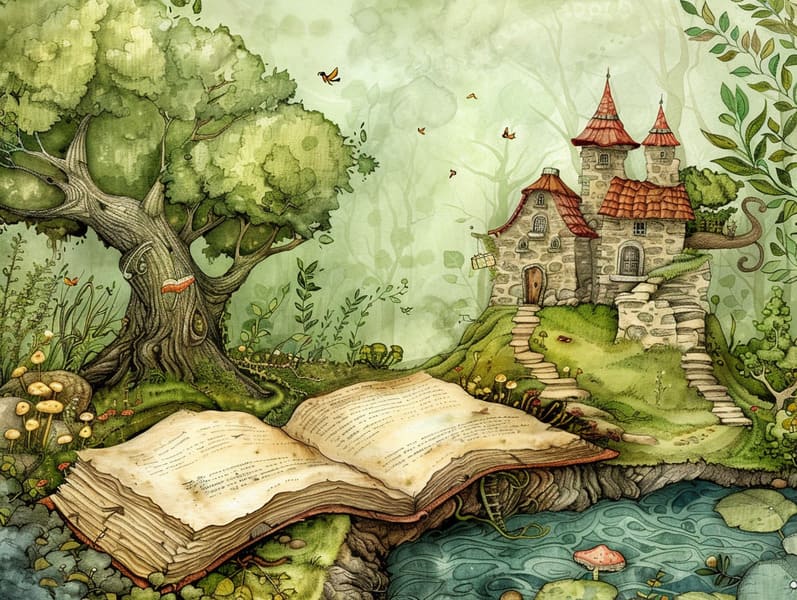The Story Behind Ancient Fairy Tales and Its Ageless Beauty.
The Story Behind Ancient Fairy Tales and Its Ageless Beauty.
Blog Article

Popular fairy tales have old origins. These narratives have been conveyed from one generation to the next centuries before they were ever inscribed. They were born from a variety of societies, including Eastern traditions. They were initially transmitted among elders, often carrying themes and messages pertaining to the societal norms and beliefs of the time.
The renowned Brothers Grimm, Jacob and Wilhelm (the Grimm brothers), were among the first to gather and publish many of these beloved fairy tales. Their collection, "Grimm's Folk Tales," included tales like "The Story of Cinderella," "The Story of Hansel and Gretel," and "Snow White," which have since become classics in the world of traditional fairy tales. Similarly, Andersen's delightful stories, such as "The Mermaid's Tale," and "The Duckling's Story," have captivated hearts worldwide, guaranteeing their place in the pantheon of timeless fairy tales.
Despite being ancient, fairy tales remain as impactful as ever, especially as kids' bedtime tales. These fantastical tales are now available in numerous formats, including vividly illustrated books, delightful animations, and online storybooks.
Their ongoing significance can be credited to several whimsical characteristics:
Vital Lessons: Ancient fairy tales often present important moral lessons. Fairy tales like "The Boy Who Cried Wolf" teach the virtue of being truthful, while "The Story of the Tortoise and the Hare" illustrate the merits of perseverance and meekness. These tales offer kids clear distinctions between truth and falsehood, guiding their moral compass in a soft yet significant way.
Sympathy and Perception: Timeless fairy tales frequently portray heroines facing tests and troubles, provoking children to relate with their struggles and back their triumphs. For instance, "Beauty's Beast" points out the necessity of seeing beyond looks to perceive the inner core of a being, nurturing empathy and appreciation.
Cultural Knowledge: Many timeless fairy tales are steeped in the cultural contexts from which they originated. Exploring these tales can provide intriguing perspectives into different backgrounds, advancing a sense of global understanding and respect.
Inventiveness and Imagination: The mythical elements in old fairy tales—magical beings—ignite children’s innovations. These tales guide readers to imaginary realms, promoting imaginative thinking and a sense of marvel that endures a lifetime.
Timeless fairy tales are not only mesmerizing but also instructive. They work as charming tools in nurturing various intellectual and emotional capacities in the young. When old fairy tales are spoken out loud, they enhance language acquisition by bringing new language items and sophisticated sentence structures. This practice also develops auditory perception and attentiveness, as little ones keep up with the story, ready to see what happens next.
Furthermore, discussing the themes and characters of fairy tales can sharpen thought processes and cognitive skills. The young are shown to discover patterns, foresee events, and understand cause and effect. These examinations also ease little ones articulate their thoughts and feelings, cultivating their emotional intelligence.
In today’s information age, the abundance of online storybooks has made these fairy tales more attainable than ever. Web platforms and mobile apps share large libraries of classic fairy tales that can be seen or listened on anytime, anywhere. Fairy tales recited are particularly in demand, sharing more info an entertaining method for the young to immerse in these charming stories. Narrated books and read-out-loud stories transport characters and settings to life, often accompanied by magical soundtracks and background music that boost the tale experience.
The enduring charm of timeless fairy tales lies in their ability to shift to current eras while keeping their central values. Contemporary updates of these fairy tales often feature more representative figures and modern settings, making them familiar to today’s audience. However, the key lessons of spirit, generosity, and even-handedness remain unchanged, continuing to connect with audiences of all ages.
Traditional fairy tales also offer a sense of solace and understanding. They showcase a systematic narrative with a definite beginning, middle, and end, often finishing with the resolution of conflicts and the triumph of good over evil. This consistency can be heartening for young readers, proffering a sense of consistency in an inconstant world.
Timeless fairy tales continue to spellbind and enlighten new generations, maintaining their appeal and significance in modern society. As kids' bedtime tales, they make available a perfect blend of magic and knowledge, promoting moral values, empathy, and creativity. The proliferation of digital fairy tales and the well-liked nature of fairy tales read aloud affirm that these timeless tales remain acquirable to new generations.
By upholding and disseminating these stories, we continue to cherish the rich tapestry of creativity and cultural heritage. Whether you are exploring a vividly illustrated book, exploring a virtual collection, or listening on an audio story, the majesty of traditional fairy tales is always within reach. These tales convey of the lasting presence of tales and its ability to join us across time and space.
Whether you are accessing a beautifully illustrated book, perusing a internet collection, or listening through an voice book, the fascination of timeless fairy tales is always within reach.
These stories convey of the everlasting ability of narratives and its ability to bring us together across eras and regions, weaving a spell that charms and informs alike.